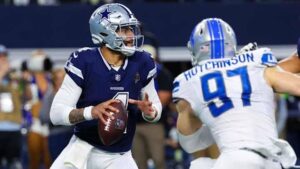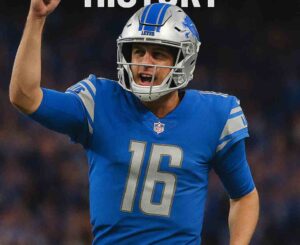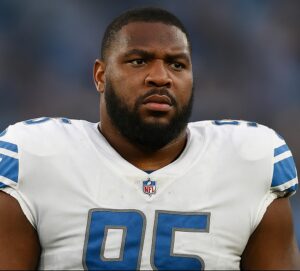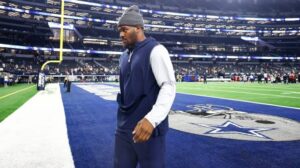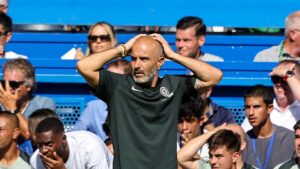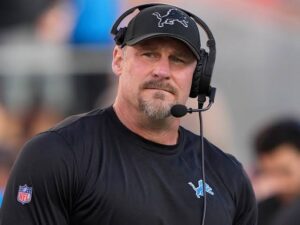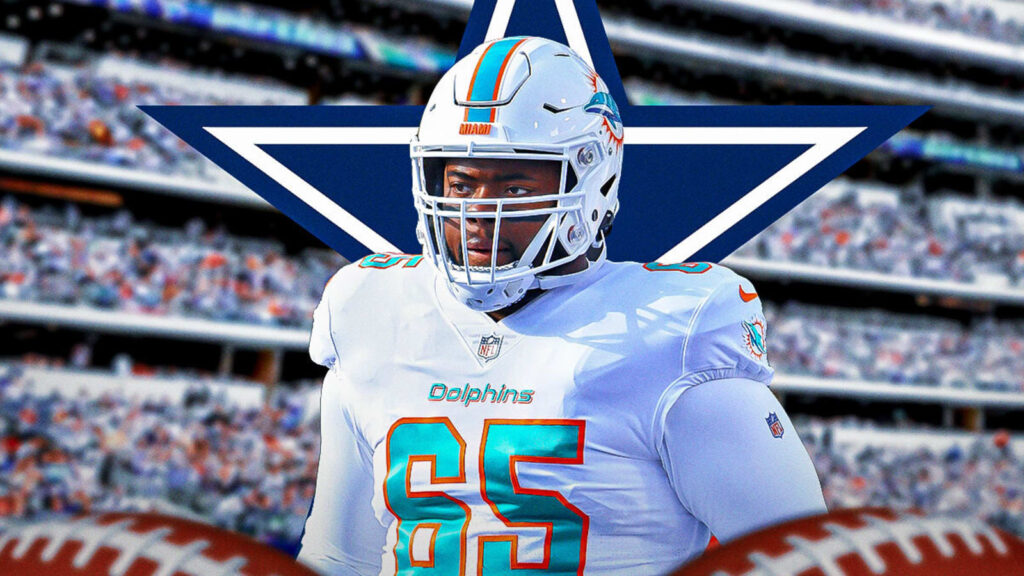
The Dallas Cowboys have made a significant move in their offensive line by agreeing to terms with former Miami Dolphins offensive lineman Robert “Rob” Jones. Jones and the Cowboys have reached a one-year deal worth up to $4.75 million, as reported by Adam Schefter. This move comes as the Cowboys look to fill the gap left by the retirement of longtime right guard Zack Martin. Jones, a fourth-year guard, started all 17 games for the Dolphins in 2024 and is expected to step into the starting role for Dallas.
Despite a rough 2023 season for the Dolphins, Jones stood out for his consistency. He played 94.7% of Miami’s total offensive snaps in 2024 and missed only two games. In the remaining 15 games, he was on the field for 100% of the offensive plays. His durability and ability to remain on the field were notable, but his performance didn’t fully meet Miami’s expectations.
Jones finished the season with a player grade of just 56.1 from Pro Football Focus, placing him near the bottom 30% of all guards in the league. His grades in both pass protection and run blocking were subpar, which raised questions about his overall effectiveness. While his durability was a strength, his performance on the field didn’t match up to the higher standards expected from an NFL starter.
With Jones now on board, he will likely join the Cowboys’ established offensive line unit, which already includes players like Tyler Smith, Tyler Guyton, Terrence Steele, and Cooper Beebe. Dallas’ offensive line has been one of the team’s key strengths in recent years, consistently providing solid protection despite challenges at the quarterback position. In 2024, the Cowboys’ line allowed only a 5.63 sack percentage, ranking ninth-best in the NFL.
In addition to the signing of Rob Jones, the Cowboys have made a number of other important moves during the first day of the NFL’s free agency negotiating period. One of the notable moves was the extension of defensive tackle Osa Odighizuwa. Odighizuwa, who recorded 4.5 sacks in 2024, was a crucial part of the Cowboys’ defense and will continue to be a central figure under new defensive coordinator Matt Eberflus in 2025.
The Cowboys also made a move to address their struggling backfield by agreeing to a deal with running back Javonte Williams. Dallas’ rushing attack was among the league’s worst in 2024, ranking near the bottom in yards per carry, rushing yards per game, and rushing touchdowns. With backup running back Rico Dowdle becoming an unrestricted free agent, the Cowboys appear to be moving forward with Williams to improve their ground game.
Along with these key signings, the Cowboys have bolstered their roster with additional additions, including safety Markquese Bell, cornerback C.J. Goodwin, and long snapper Trent Sieg. These moves suggest that the team is actively working to strengthen its depth and overall roster ahead of the upcoming season.
With the official signing window opening on Wednesday, March 12 at 4 p.m. ET, the Cowboys’ offseason activity is just getting started. The team is far from finished with its acquisitions, and it remains to be seen whether further notable moves will be made as they prepare for the 2025 season.
